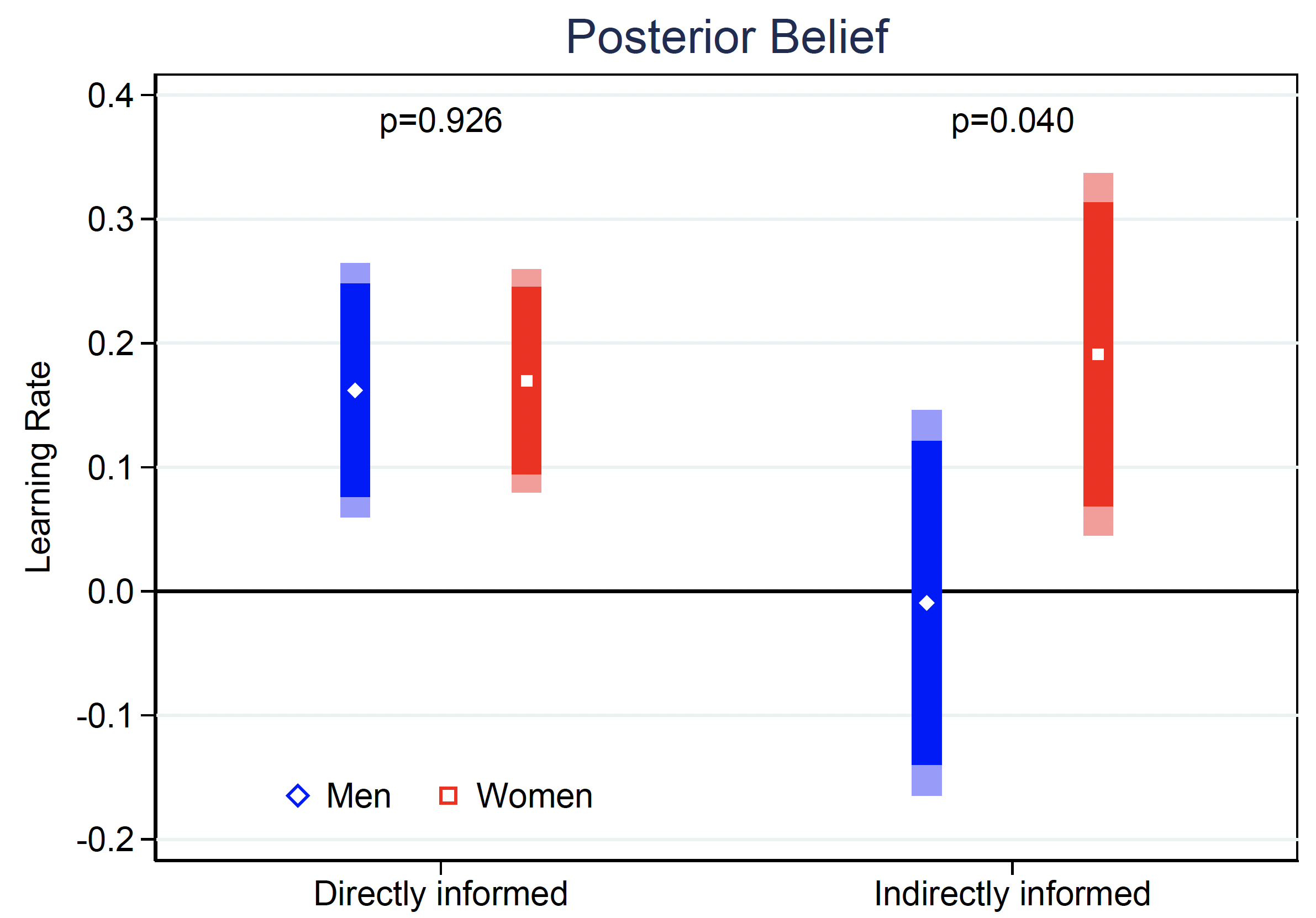About 50 years ago, the UK government introduced a policy that changed the beneficiaries of a subsidy to families with children from fathers to mothers. The prevailing economic models of the household at the time suggested that the policy change should have no effects – they viewed households as a primary unit that share all their information and make optimal decisions (c.f. Becker 1981). However, everyone who has ever been part of a family can probably agree that this assumption is not realistic. It turned out that the sceptics were right: it did matter who received the money. When mothers instead of fathers were the first to get their hands on the subsidy, it ended up being used differently. For example, the amount spent on children’s clothing went up whereas the amount spent on men’s clothing went down (Lundberg et al. 1997, Ward-Batts 2008).
Over the past 50 years, there has been a progressive shift in economic research to learn how households make economic decisions in the real world (see e.g. Ashraf 2009). A relevant question that has received comparably little attention so far is how households form beliefs about economic variables and, in particular, to what extent we can expect information sharing within the household in the belief-formation process. (That such beliefs matter in various circumstances is well documented. See e.g. Kenny and Georgarakos 2022.)
For example, a recent experiment with couples in Chennai, India, (Conlon et al. 2022) studies situations where the incentives of the household are aligned: i.e. it is in both parties’ best interest that correct information spreads. In the experiment, the husband or wife can get information about the number of differently coloured balls in an urn. They can pass this information on to their spouse, who did not have this information, and the spouse can subsequently use it to make an optimal guess about the colour of the ball that is drawn next. It turns out that there are barriers to information even in such a setting: while wives took the information discovered by their husbands into full consideration, husbands failed to do the same with information revealed to their wives.
That truthful within-household communication is hard to achieve in such an abstract game – and also in natural but extreme and distressing circumstances (Verwimp 2022) – begs the question: would gender differences in social learning appear also in a natural context? We address this question (Fehr et al. 2022a) by leveraging data from another study that examined how information about household-income rank at the national and the global level affect policies to tackle global inequality (Fehr et al. 2022b). Our study builds on a two-year incentivised survey experiment in 2017–18 with a representative sample of Germans. We repeatedly observe all household members’ beliefs about their household income rank and draw on exogenous variation in accurate information about these beliefs. This allows us to study information flows between informed and uninformed household members.
In a baseline survey, we asked respondents to state their beliefs about their household’s rank in the national and global income distribution (and paid them for the accuracy of their answers). All adult members of every household were interviewed in private, without the possibility to communicate with each other, so they could not share any information during the baseline survey even if they wanted to.
Figure 1 shows that subjects had significant misperceptions about their household’s position in the income distribution. Importantly, both men and women had similar degrees of misperceptions. Men underestimate their true income ranks by about nine percentage points, whereas women underestimate their income ranks by 10 percentage points.
Figure 1 Misperceptions in prior beliefs
Notes: Reproduction of Figure 1 from Fehr et al. (2022a). See the paper for more details.
Figure 2 zooms in at the household level and shows that while misperceptions are somewhat correlated between husbands and wives, they are far from perfectly so. This suggests that husbands and wives either see different information, or they share the information with each other but use it differently.
Figure 2 Correlation of misperceptions across husbands and wives
Notes: Reproduction of Figure 2.A from Fehr et al. (2022a). See the paper for more details.
After we elicited the baseline beliefs, we randomly selected half of the participants to receive accurate information about their household’s income rank. We randomised at the individual level to create variation within households so we could study both how individuals learn from information when they receive it directly, and also whether the information diffuses to other household members. Accordingly, we had households in which only the wife received the information but not their husbands, and vice versa. Moreover, there were households in which both husband and wife received the information or no one did.
We surveyed the households a year later, which gave the households plenty of time to stew over the information provided in the first survey. All participants were again asked to state their beliefs about their household rank (and were, again, paid for their accuracy). Participants were neither discouraged nor encouraged to share the information in the year between the two survey waves. When they took the first survey, they did not know that they or anyone else would be asked the rank question again a year later. Any discussion of the information provided to one spouse, but not the other, therefore arises completely organically.
Figure 3 summarises how individuals learn from information directly (i.e. when they receive it themselves) and indirectly (when their spouse receives the information). When respondents directly receive information about their true income ranks, the information has a significant and persistent effect on beliefs even after a whole year. More importantly, both men and women seem to incorporate the information to a similar degree when it is given directly to them. Figure 3 shows that, after one year, the learning rate was approximately 0.16 for both men and women. In other words, for each percentage point shock in information given directly to the respondent, the perceived income rank as measured a year later is higher by about 0.16 percentage points.
Figure 3 Direct and indirect learning from information
Notes: Reproduction of Figure 3.A from Fehr et al. (2022b). See the paper for more details.
However, we document a sharp gender difference in how men and women react to information discovered by their spouses: the pass-through of information from women to men is substantially lower than from men to women. More precisely, Figure 3 shows that when a wife receives the information indirectly, through her husband, the effect on her belief about income rank one year later (0.19 percentage points, 𝑝 = 0.01) is at least as strong as if she received the information directly. In contrast, when a man is indirectly informed about the true household income rank through his female partner, he does not adjust his beliefs one year later (-0.01 percentage points, 𝑝 = 0.91). The difference in the rates of indirect learning (0.19 for women vs. -0.01 for men) is statistically significant (𝑝 = 0.040).
Why do men and women react differently to information from their partners? It could come from gender differences in communication patterns. For example, it may be that men are more likely to talk about income than women. If that were true, men would not receive information about the income rank from their wives and thus could not update their beliefs. However, that is not what we see.
In the second survey wave, we included a question asking treated respondents whether or not they remembered sharing the information they got with other household members. While a sizeable number of respondents said they shared the information with other household members, we do not find any gender differences in the propensity to report having done so. We take this as an indication – but certainly no proof – that it may be the husbands’ capacity to listen in the household, rather than the wives' unwillingness to share information, that is at play.
There is a lesson here for policymakers: if money or information should be directed to households (see e.g. Jain and Ilzetzki 2022 for a recent example), it matters who in the household it is directly targeted to.
References
Ashraf, N (2009), “Spousal control and intra-household decision making: An experimental study in the Philippines”, American Economic Review 99(4): 1245–77.
Becker, G S (1981), A treatise on the family, Cambridge, MA: Harvard University Press.
Conlon, J, M Mani, G Rao, M W Ridley, and F Schilbach (2022), “Learning in the household”, NBER Working Paper 28844.
Fehr, D, J Mollerstrom and R Perez-Truglia (2022a), “Listen to her: Gender differences in information diffusion within the household”, NBER Working Paper 30513.
Fehr, D, J Mollerstrom, and R Perez-Truglia (2022b), “Your place in the world: Relative income and global inequality”, American Economic Journal: Economic Policy 14(4): 232–68.
Jain, S, and E Ilzetzki (2022), “Assisting households facing rising energy costs”, VoxEU.org, 11 October.
Kenny, G, and D Georgarakos (2022), “Household spending and fiscal support during the pandemic: The role of public perceptions”, VoxEU.org, 28 April.
Lundberg, S J, R A Pollak, and T J Wales (1997), “Do husbands and wives pool their resources? Evidence from the UK Child Benefit”, Journal of Human Resources 32(3): 463–80.
Verwimp, P (2022), “The potential for intra-household crisis between migrated Ukrainian women and stay-behind men”, VoxEU.org, 27 May.
Ward-Batts, J (2008), “Out of the wallet and into the purse: Modeling family expenditures to test income pooling”, Journal of Human Resources 43(2): 325–51.








